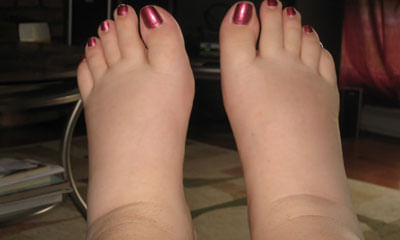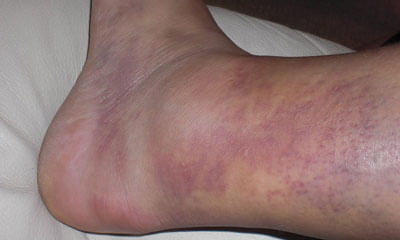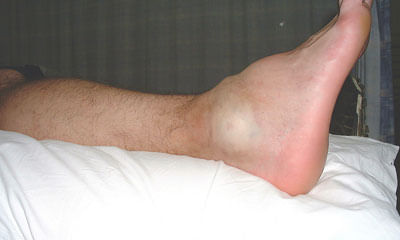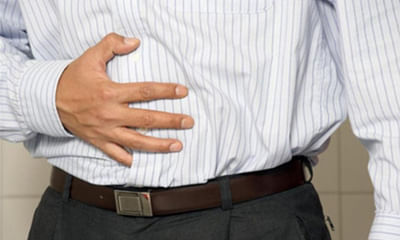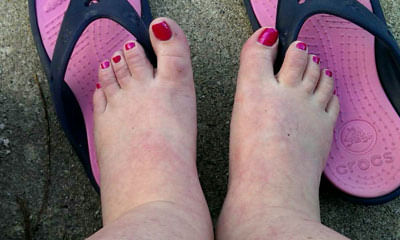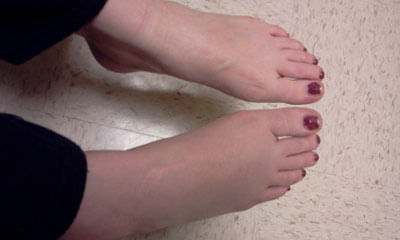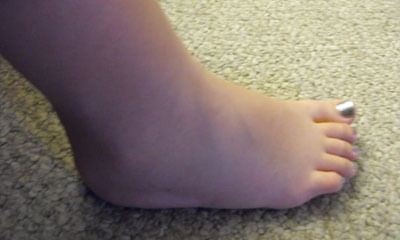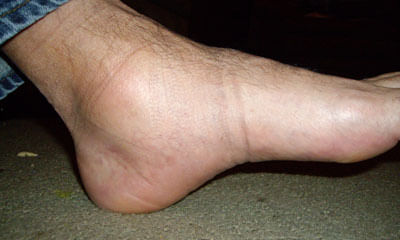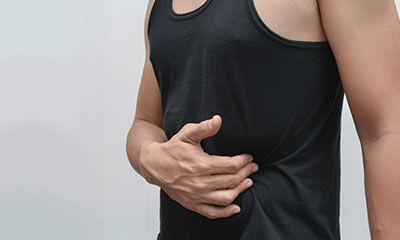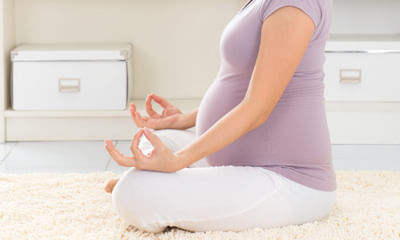Kidney Swelling In Pregnancy
I am a 22 years old female. I get swelling around my ankles (outwards side) whenever I walk even 6-7 k steps. If I have ...
Ask Free Question
Regards Lybrate user. The ankle area is quite compact and skin flexibility / elasticity is fair over the area. Swelling around the ankles may occur due to trauma (ankle twist, fractures) or heart / kidney problems or lymph drainage problems or arthritis. Usually heart / kidney / lymph drainage problems tend to be more generalized in one or both legs. It would be in the foot, ankle and leg regions and just not around the ankle. If you have had any history of trauma and the swelling had occurred after that, it may have stretched the skin creating free space. So positioning your leg towards gravity (like hanging your leg down when sitting or walking) could lead to the fluids coming down the leg and may occupy the free space. If you notice there is no swelling after you lie down for a while or elevate your leg up on pillow, then it could just be fluid build up in the free space - which may not be a concern. If walking few steps hurt, brings swelling on and it continues to hurt even after resting for 15-20 minutes, then it may be related to some kind of arthritis. It would then be recommended to consult an orthopaedician or rheumatologist to ascertain specificity of the disorder.
My right side ankle is swelling and it looks like the bone is going outward. While touching ankle it feels like there is ...
Ask Free Question
Home care to treat a swollen ankle or leg at home, remember the acronym rice: rest. Stay off your ankle or leg until you can get to the doctor or until the swelling goes away. Ice. Put ice on the swollen area as soon as you can for 15 to 20 minutes. Then repeat every three to four hours. Compression. Wrap your ankle or leg snugly, but be sure not to cut off circulation. Support stockings may be an option. Elevation. Raise your ankle or leg above your heart (or as far above your heart as possible). Two pillows will usually give you the correct elevation. This encourages fluid to move away from your leg. Medical treatment if you seek medical attention, your physician will likely determine what’s causing your symptoms. Testing may include: blood tests an x-ray an electrocardiogram urinalysis if the swelling is caused by a medical condition such as congestive heart failure, the doctor may prescribe diuretics. These medications affect the kidneys and stimulate them to release fluids. If an ongoing medical condition such as rheumatoid arthritis is the root of the problem, your treatment may turn into management and prevention of that condition. Swelling due to injury may require bone resetting, a cast, or surgery to repair the injured area. For swelling that’s painful, a doctor may prescribe a pain reliever or over-the-counter anti-inflammatory medication, such as ibuprofen (advil) or naproxen sodium (aleve). Mild swelling from pregnancy or a mild injury usually goes away on its own after delivery of the baby or with sufficient rest. After treatment, you should contact your doctor if: your swelling gets worse you have breathing difficulty or chest pain you feel dizzy or faint exercise precautions while you can’t always prevent injuries during physical activity, warming up first can help. This includes a walk or light jog before engaging in vigorous physical activity. Choose supportive footwear. Proper shoes can help correct any gait issues and prevent injuries. You should choose shoes that match your activity or your specific needs. If you jog or run, get fitted by a professional for the correct shoe. Compression socks compression socks apply pressure to your lower leg. In some cases, this can help prevent and alleviate ankle and foot swelling caused by certain conditions, such as: deep vein thrombosis lymphedema varicose veins venous insufficiency you should check with your doctor before using compression socks for your swelling. These special socks should be properly fitted for you and your needs. Also, be sure to wear them during the day and remove them before you go to bed. Leg elevation.
I am diwas sarki I am getting swelling because of burn with plastic in my ankle from last 3 days. ...
Ask Free Question
To treat a swollen ankle or leg at home, remember the acronym rice: rest. Stay off your ankle or leg until you can get to the doctor or until the swelling goes away. Ice. Put ice on the swollen area as soon as you can for 15 to 20 minutes. Then repeat every three to four hours. Compression. Wrap your ankle or leg snugly, but be sure not to cut off circulation. Support stockings may be an option. Elevation. Raise your ankle or leg above your heart (or as far above your heart as possible). Two pillows will usually give you the correct elevation. This encourages fluid to move away from your leg. Medical treatment if you seek medical attention, your physician will likely determine what’s causing your symptoms. Testing may include: blood tests an x-ray an electrocardiogram urinalysis if the swelling is caused by a medical condition such as congestive heart failure, the doctor may prescribe diuretics. These medications affect the kidneys and stimulate them to release fluids. If an ongoing medical condition such as rheumatoid arthritis is the root of the problem, your treatment may turn into management and prevention of that condition. Swelling due to injury may require bone resetting, a cast, or surgery to repair the injured area. For swelling that’s painful, a doctor may prescribe a pain reliever or over-the-counter anti-inflammatory medication, such as ibuprofen (advil) or naproxen sodium (aleve). Mild swelling from pregnancy or a mild injury usually goes away on its own after delivery of the baby or with sufficient rest. After treatment, you should contact your doctor if: your swelling gets worse you have breathing difficulty or chest pain you feel dizzy or faint exercise precautions while you can’t always prevent injuries during physical activity, warming up first can help. This includes a walk or light jog before engaging in vigorous physical activity. Choose supportive footwear. Proper shoes can help correct any gait issues and prevent injuries. You should choose shoes that match your activity or your specific needs. If you jog or run, get fitted by a professional for the correct shoe. Compression socks compression socks apply pressure to your lower leg. In some cases, this can help prevent and alleviate ankle and foot swelling caused by certain conditions, such as: deep vein thrombosis lymphedema varicose veins venous insufficiency you should check with your doctor before using compression socks for your swelling. These special socks should be properly fitted for you and your needs. Also, be sure to wear them during the day and remove them before you go to bed. Leg elevation if you stand a lot during the day, try propping your feet up or soaking them in water when you get home to help prevent swelling. Muscle relaxant: reduces muscle tension and helps relieve muscle pain and discomfort. Transcutaneous electrical nerve stimulation (also known as tens) is something which helps ease muscle pain and spasms. You can strengthen the muscles by doing tonification ie. Improving the tone of the muscles by adding either weight cuffs / sand bags which will help you to improve the strength of the muscles.
I have acidity everyday after eating food. A week ago I had swelling in my hand and now I have swelling in my heel. I al ...
Ask Free Question
Follow this 1. Don't take tea empty stomach. Eat something like a banana (if you are not diabetic) or any seasonal fruit or soaked almonds and a glass of water first thing in the morning (within 10 mins of waking up). No only biscuits or rusk will not do. 2. Don't overeat 3. Take your breakfast every day. Don't skip it. U should eat whatever your mother or grandparent eat in bfast. I mean to say whatever is your traditional food. If punjabi eat paratha, if belongs to south then take idli/ dosa etc. 4. Have light meals every 2 hours (in addition to your breakfast, lunch n dinner) e.g. Nariyal paani, chaach, a handful of dry fruits, a handful of peanuts, any fresh n seasonal fruit, a cup of curd/milk etc 5. Finish your dinner at least 2 hours before going to sleep. 6. Maintain active life style7. Avoid fast foods, spicy n fried foods, carbonated beverages 8. Take a lot of green vegetables n fruit. 9. Drink lot of water.10. Everyday preferably sleep on same time exercise in the form of yoga, cycling, swimming, gym etc.Till lock down do suryanamaskar every day. for more details, you can consult me.
I am working woman and I am sitting more than 6 hrs per day for work, and last nyt my both legs are swelled does it lead ...
Ask Free Question
Dear user it needs to be confirmed with couple of tests however its just due to improper circulation resulting in swelling of legs and probably kidney disease is needed to rule out with kft and cbc reports along with usg whole abdomen. Tc.
I am experience swollen feet, hands and knee pit for almost a month now. Earlier I thought that happened due to heat (i ...
Ask Free Question
Edema can be result of medication pregnancy or an underlying disease often congestive heart failure kidney or cirrhosis of liver sign of inflammation of tissues or joint of hand result of serious infection trauma or abnormal processes
My mom is suffering from swelling (bilateral & especially near ankles &foot) since mid jan 2020. Orthopedic doctor concl ...
Ask Free Question
Leg swelling generally occurs because of an abnormal accumulation of fluid in the tissues of the lower extremity. Common causes of leg swelling include idiopathic Edema (Swelling of Unknown Cause), overweight, Is older, salt retention, cellulitis, congestive heart failure, venous insufficiency, pregnancy, and medication side effects. Some tips that may help reduce swelling: 1. Put your legs on pillows to raise them above your heart while lying down. 2. Exercise your legs. This helps pump fluid from your legs back to your heart. 3. Follow a low-salt diet, which may reduce fluid buildup and swelling. 4. Wear support stockings (sold at most drugstores and medical supply stores). 5. When traveling, take breaks often to stand up and move around. 6. Avoid wearing tight clothing or garters around your thighs. 7. Lose weight if you need to.
I have too much swelling in my foot (below the ankle) in lower limbs what is the reason of swelling in foot can I take d ...
Ask Free Question
over weight gain sodium levels high lead to swelling foot raise your foot end do exercise regularly avoid fatty foods take medication above
Hi, I have a pain in my kidney (both sides) and the pain spreads like in front of the kidney and it moves to backside of ...
Ask Free Question
Kidney pain and back pain can be difficult to distinguish, but kidney pain is usually deeper and higher in the and back located under the ribs while the muscle pain with common back injury tends to be lower in the back. Causes of kidney pain are mainly urinary tract infections and kidney stones. Kidney pain definition and facts •the function and purpose of the kidneys are to remove excess fluid and waste products from the body. •the kidneys are organs that are located in the upper abdominal area against the back muscles on both the left and right side of the body. •kidney pain and back pain can be difficult to distinguish, but kidney pain is usually deeper and higher in the and back located under the ribs while the muscle pain with common back injury tends to be lower in the back. •causes of kidney pain are mainly urinary tract infections and kidney stones. However, there are many other causes of kidney pain, including penetrating and blunt traumathat can result in a "lacerated kidney. •if a woman is pregnant and has kidney pain, she should contact her doctor. •symptoms of kidney pain may include ofever, opainful urination, oflank pain, onausea, ovomiting. •kidney pain can be on the left, right, or both sides. •causes of kidney pain are diagnosed with the patient's history, physical examination, and lab tests, including blood, pregnancy, and urine tests. A ct scan or mri of the abdomen and pelvis may be ordered. •treatment for the cause of kidney pain depends upon the underlying cause, but in general, ibuprofen (motrin), ketorolac (toradol), and/or acetaminophen (tylenol) are used for pain. Antibiotics are usually required if the underlying cause is bacterial infection. •some people can pass a kidney stone spontaneously that resolves kidney pain; however, other people may need surgery. •kidney pain can be prevented by avoiding those situations that are the underlying causes of kidney infection and/or damage. •the prognosis for someone with kidney pain depends upon the cause, and the majority of patients can have a good outcome when treated quickly and appropriately. Kidney stone symptoms kidney stones form within the kidney or urinary tract. Kidney stones that do not produce symptoms are called "silent" stones. When symptoms do occur, they usually come on suddenly and include excruciating cramping pain in the low back and/or abdomen, side, or groin. Changing body positions does not relive the pain. What are symptoms and signs are associated with kidney pain? Symptoms associated with kidney pain (also termed renal or flank pain) are discomfort (acute or chronic), aches, or sharp pain that occurs in the back between approximately the lowest rib and the buttock. Depending on the cause of the pain, it may radiate down the flank to the groin or toward the abdominal area. Some individuals may develop symptoms and signs such as: •fever •painful urination (dysuria) •blood in the urine •nausea •vomiting •dizziness •constipation or diarrhea •rash •fatigue •chills other signs and symptoms that may occur if the kidney function is increasingly compromised are a •metallic taste in the mouth, •bad breath, •swelling and shortness of breath. Depending on the underlying cause, kidney pain may occur on the left or right side. Sometimes it can occur on both sides of the back; traumatic kidney injury (kidney laceration) may cause the above symptoms, but mild damage may initially have no symptoms. Severe kidney lacerations can cause abnormal blood pressure and pulse, and shock. Kidney pain itself is a symptom that may happen due to problems or diseases of the kidney or its associated structures, including the ureters or bladder. However, other diseases may mimic kidney pain, but are not actually due to the kidneys, for example, •muscle strains in the back, •spinal problems (fracture, abscesses), •rib pain, •pleuritis, •radiculitis, •retroperitoneal fibrosis, •shingles, •aortic abdominal aneurysm, •gynecological problems, and •many other causes. Although kidney pain often occurs on one side of the back, it can occur on both sides at the same time and may radiate toward the abdomen or groin. Pain that occurs suddenly, is sharp, severe, and may increase and decrease in waves is often due kidney stones in the ureters of the kidneys. Pain caused by kidney stones is termed renal colic.
Hi, It's my first pregnancy. My tiffa scan shows mild prominent bilateral fetal renal pelvis (measuring ~4 mm) it's norm ...
Ask Free Question
A fetal left or right renal pelvic ap diameter > 4 mm determined by ultrasound was considered abnormal (hydronephrosis) and a diameter ≤ 4 mm was considered normal. A renal pelvic ap diameter of 4–6 mm, 7–10 mm, and > 10 mm was considered mild, moderate, or severe hydronephrosis, respectively so yes no need to worry.

